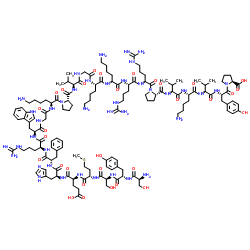US practitioner opinions and prescribing practices regarding corticosteroid therapy for severe sepsis and septic shock.
Jeffrey J Bruno, Brian M Dee, Brent A Anderegg, Mike Hernandez, S Egbert Pravinkumar
文献索引:J. Crit. Care 27(4) , 351-61, (2012)
全文:HTML全文
摘要
The aim of this study was to examine opinions and practices of US critical care practitioners (USCCPs) toward corticosteroid therapy in adult patients with severe sepsis or septic shock.A multicenter, electronic survey of USCCP members of the Society of Critical Care Medicine was conducted between March 18 and July 31, 2009.A total of 542 USCCPs responded to the survey. The majority (83%) do not commonly use corticosteroids in adult patients with severe sepsis; however, up to 81% report use of corticosteroids for septic shock. Twenty-eight percent believe that corticosteroids reduce mortality in septic shock, whereas 27% do not and 45% are unsure. The decision to initiate therapy is based, more often, on a patient's clinical status (65%) vs serum cortisol analysis (35%). Hydrocortisone is the most common corticosteroid prescribed (93%), with a median dosage of 200 mg/d and administration via intermittent intravenous injection. The Corticosteroid Therapy of Septic Shock trial had a large impact on survey respondents, with 62% reporting a practice change. Among the 19% of practitioners who do not prescribe corticosteroids, the most common reason was lack of proven survival benefit.Corticosteroids are commonly used by USCCPs in adult patients with septic shock; however, criteria used to initiate therapy and opinions regarding their impact vary.Copyright © 2012 Elsevier Inc. All rights reserved.
相关化合物
| 结构式 | 名称/CAS号 | 分子式 | 全部文献 |
|---|---|---|---|
 |
替可克肽
CAS:16960-16-0 |
C136H210N40O31S |
|
An LC-MS/MS method for steroid profiling during adrenal veno...
2015-01-01 [J. Steroid Biochem. Mol. Biol. 145 , 75-84, (2015)] |
|
The relationship between vitamin D status and adrenal insuff...
2013-05-01 [J. Clin. Endocrinol. Metab. 98(5) , E877-81, (2013)] |
|
Free and total plasma cortisol measured by immunoassay and m...
2013-05-01 [J. Clin. Endocrinol. Metab. 98(5) , 1883-90, (2013)] |
|
Comparison of IV and IM formulations of synthetic ACTH for A...
2012-01-01 [J. Vet. Intern. Med. 26(2) , 412-4, (2012)] |
|
Estimation of maximal cortisol secretion rate in healthy hum...
2012-04-01 [J. Clin. Endocrinol. Metab. 97(4) , 1285-93, (2012)] |